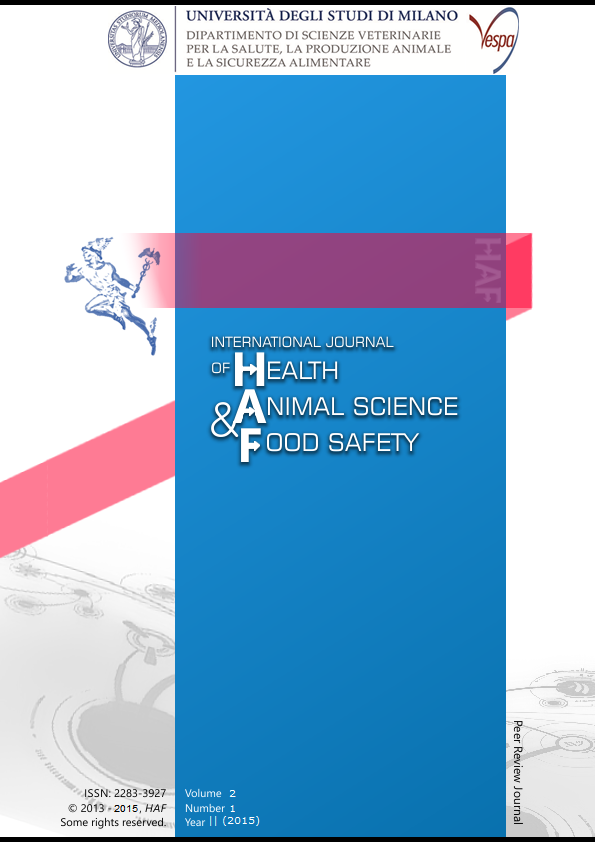Abstract
Large quantities of serum are produced during the strained yoghurt manufacturing process, which is the predominant type of yoghurt in Greece. However, the exploitation of this by-product as an alternative source of energy, protein and mineral elements in animal diets has not yet been examined. Therefore, this experiment was conducted to determine the effects of dietary yoghurt serum supplementation on growth performance and antioxidant status in sheep.
Fourty eight male 2 months old lambs of Chios breed were randomly assigned to three experimental groups; control group was fed with a commercial basal diet, whereas the other two groups consumed the same diet, with the only difference that concentrated feed was uniformly supplemented with two levels of yoghurt serum powder (YS1: 25 g/kg feed or YS2: 50 g/kg feed). Lambs were weighed in a weekly basis from the beginning until the end of the experiment and blood samples were collected to measure antioxidant status.
No significant effect of yoghurt serum powder on growth performance of fattening lambs was demonstrated, even after 28 days of dietary supplementation (P>0.05). At the same time, malondialdehyde (MDA) levels in blood plasma were not significantly different among the experimental groups (P>0.05) and no incidents of lambs with diarrhea were recorded. It can be concluded that yoghurt serum powder appears as a promising alternative of the cereals in the diets of fattening lambs, since no negative effects on growth performance and health status were observed.Riferimenti bibliografici
AFRC (Agricultural and Food Research Council) (1993). Energy and protein requirements of ruminants: an advisory manual. Technical committee on responses to nutrients, Alderman G, Cottrill BR, 100-106. CAB International, Wallingford, UK.
Alonso S., Herrero M., Rendueles M., Diaz M. (2010). Residual yoghurt whey for lactic acid production. Biomass Bioenerg., 34: 931-938.
Anderson M.J., Lamb R.C., Mickelsen C.H., Wiscombe R.L. (1974). Feeding liquid whey to dairy cattle. J. Dairy Sci., 57: 1206-1210.
Anderson M.J. (1975). Metabolism of liquid whey fed to sheep. J. Dairy Sci., 58: 1856-1859.
AOAC (Association of Official Analytical Chemists): Official methods of analysis (15th ed.). Washington, DC, USA: Association of Official Analytical Chemists.
Boukila B., Seoane J.R., Goulet J., Bernier J.F., Petit H.V. (1995). Effect of feeding fermented, ammoniated, condensed whey permeate on intake, digestibility, rumen fermentation, and acid-base balance in sheep. Can. J. Anim. Sci., 75: 135-143.
Church D.C. (1991). Livestock Feeds and Feeding. Third edition. Prentice-Hall, Englewood Cliffs, NJ, 124-125.
Galloway D.L., Goetsch A.L., Sun W., Forster L.A., Murphy G.E., Grant E.W., Johnson Z.B. (1992). Digestion, feed intake, and live weight gain by cattle consuming Bermudagrass hay supplemented with whey. J. Anim. Sci., 70: 2533-2541.
Larsen R.E., Ewing S.A., Trenkle A., Vetter R.I., Burroughs W. (1963). Dried whey and lactose additions to finishing rations for lambs. J. Anim. Sci., 22: 1126.
Morrill J.L., Dayton A.D. (1974). Effect of whey on calf starter palatability. J. Dairy Sci., 57: 430-433.
Oba M. (2011). Review: Effects of feeding sugars on productivity of lactating dairy cows. Can. J. Anim. Sci., 91: 37-46.
Ohkawa H., Ohishi N., Yagi K. (1979). Assay for lipid peroxides in animal tissues by thiobarbituric acid reaction. Anal Biochem., 95: 351-358.
Pinchasov Y., Hasdai A., Gordin S., Katznelson D., Volcani R. (1982). Performance of high-yielding dairy cows fed liquid whey. J. Dairy Sci., 65: 28-36.
Rapetti L., Falaschi U., Lodi R., Vezzoli F., Tamburini A., Greppi G.F., Enne G. (1995). The effect of liquid whey fed to dairy goats on milk yield and quality. Small Ruminant Res., 16: 215-220.
Rapetti L., Crovetto M., Galassi G., Sandrucci A., Succi G., Tamburini A., Battelli G. (2002). Effect of maize, rumen-protected fat and whey permeate on energy utilization and milk fat composition in lactating goats. It. J. Anim. Sci., 1: 43-53.
SAS/STAT (2005). Statistical analysis systems user’s guide, version 9.1.3. SAS Institute Inc., Cary, NC, USA.
Schingoethe D.J. (1976). Whey utilization in animal feeding: A summary and review. J. Dairy Sci., 59: 556-570.
Schingoethe D.J., Skyberg E.W. (1981). Lactation and growth of dairy cows and steers from large amounts of dried whey. J. Dairy Sci., 64: 1571-1578.
Susmel P., Spanghero M., Mills C.R., Stefanon B. (1995). Rumen fermentation characteristics and digestibility of cattle diets containing different whey:maize ratios. Anim. Feed Sci. Technol., 53: 81-89.
Schingoethe D.J., Skyberg E.W., Bailey R.W. (1980). Digestibility, mineral balance, and rumen fermentation by steers of rations containing large amounts of lactose or dried whey. J. Dairy Sci., 63: 762-774.
Van Soest P.J., Robertson J.B., Lewis B.A. (1991). Methods for dietary fiber, neutral detergent fiber, and non-starch polysaccharides in relation to animal nutrition. J. Dairy Sci., 74: 3583–3597.
Walzem R.L., Dillard C.J., German J.B. (2002). Whey Components: Millennia of Evolution Create Funcionalities for Mammalian Nutrition: What we know and what we may be overlooking. Crit. Rev. Food Sci., 42: 353-375.
This work is licensed under a CC BY-SA 4.0 international

